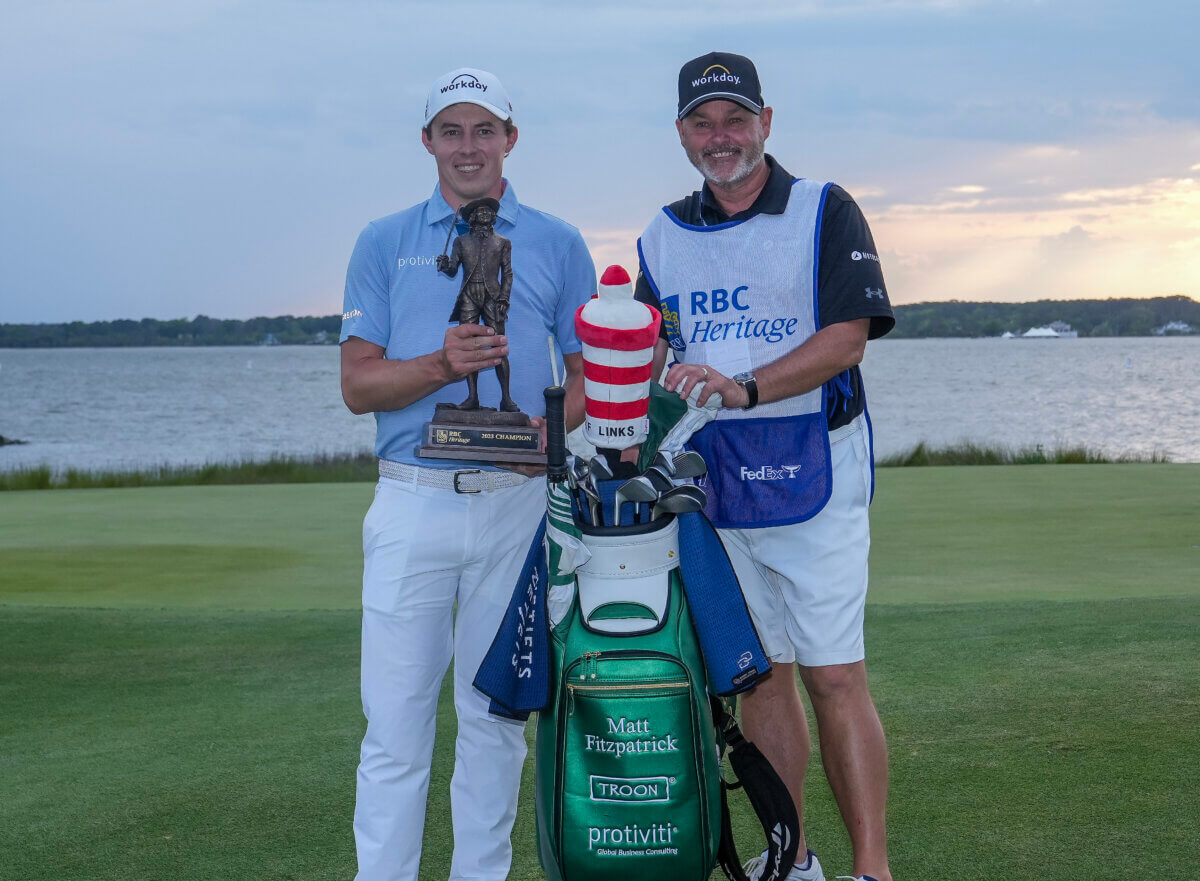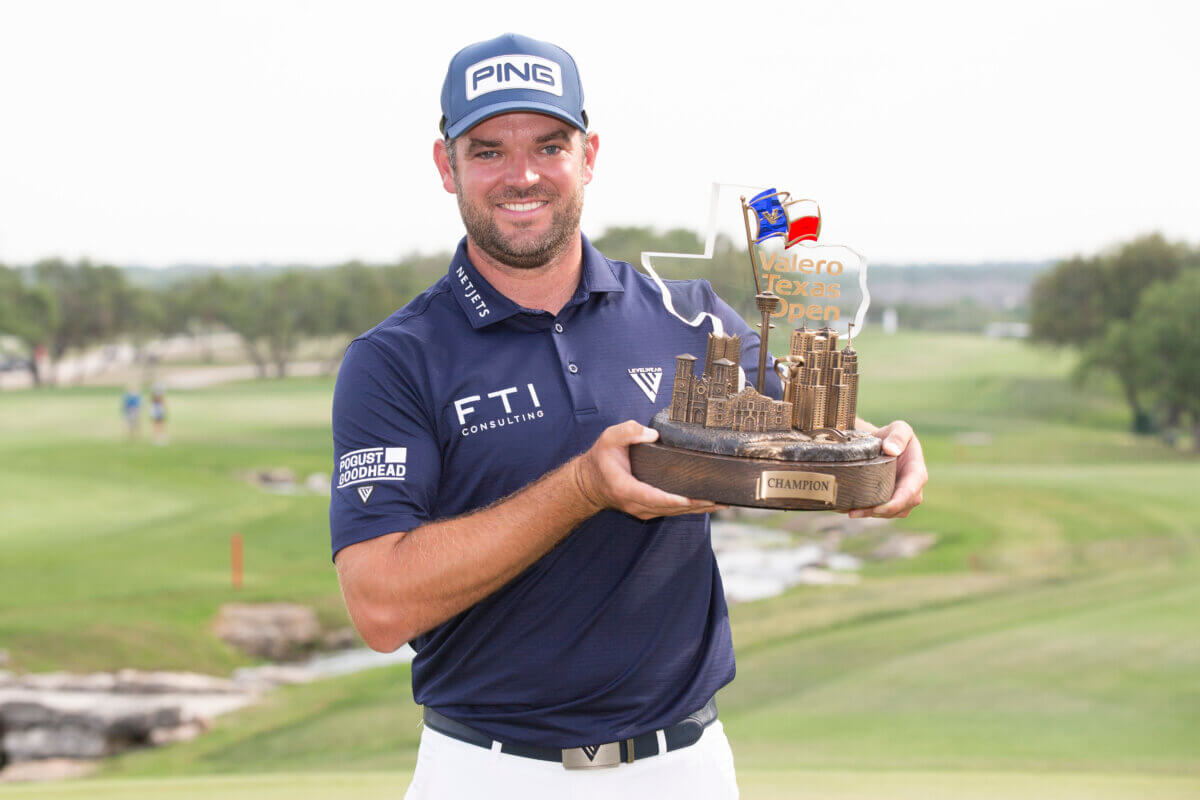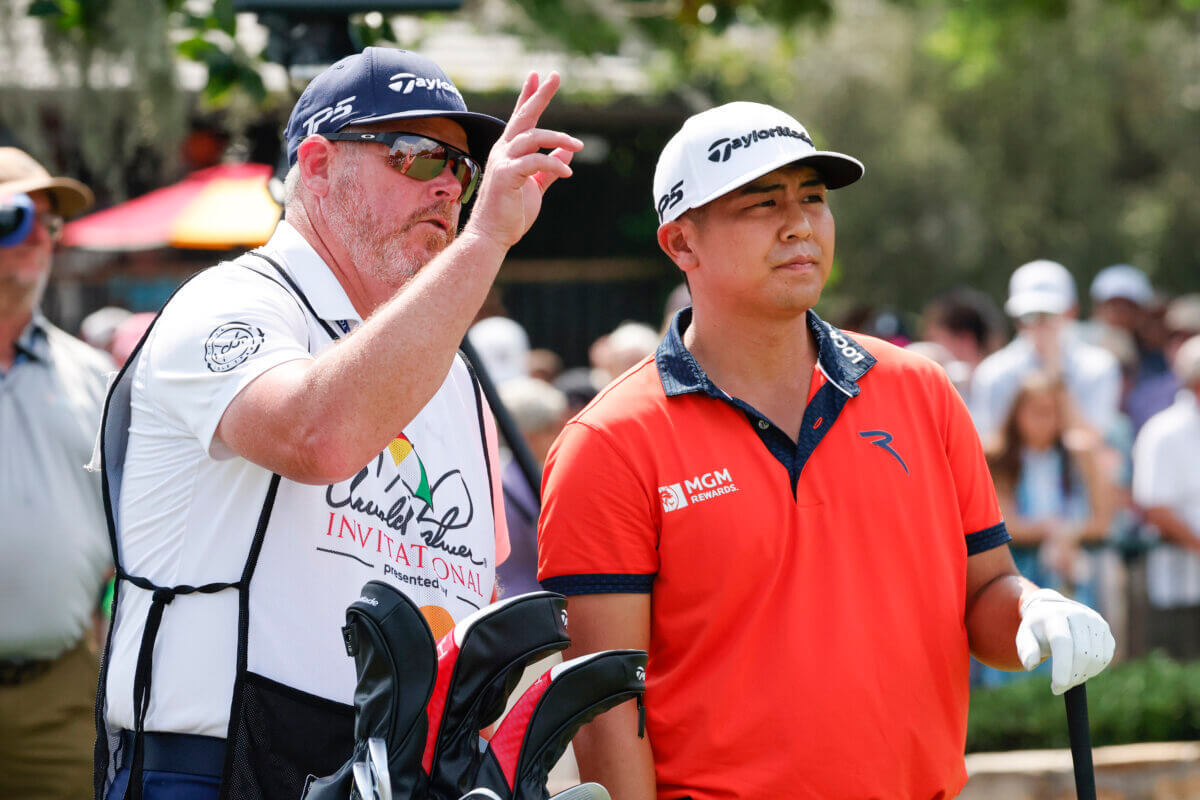Q&A with ‘Caddy For a Cure’ founder, Russ Holden
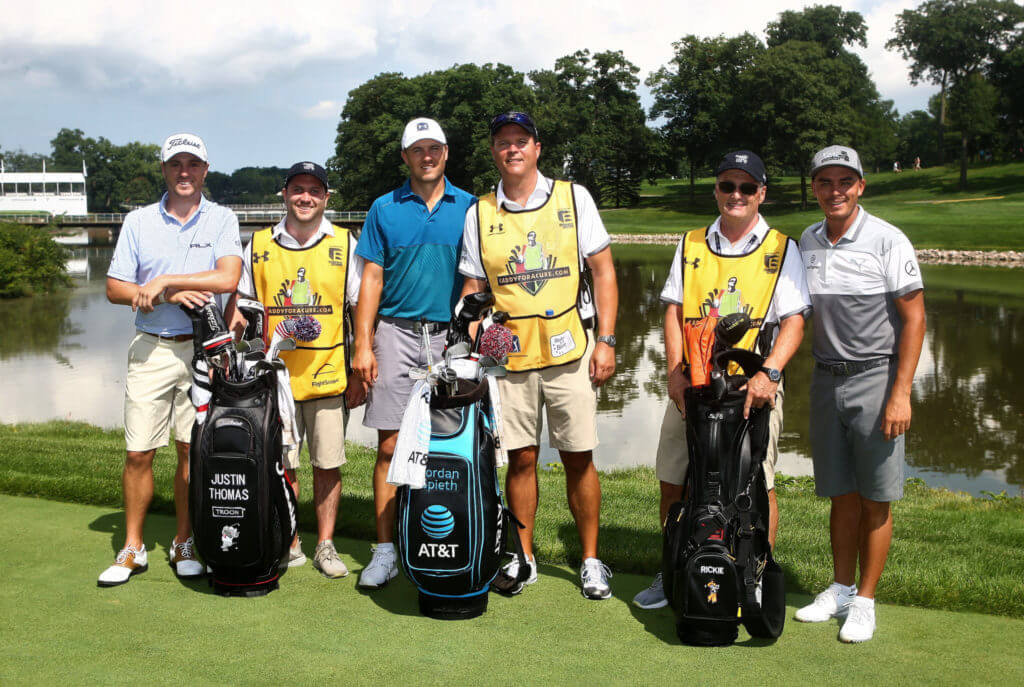
Imagine peering over Rory’s shoulder, seeing that 3-inch break on his 10 footer for birdie, and having him nod in agreement. He steps up, drains the putt and tips his hat to you. You did good, definitely earned that fist bump. Now you grab the bag and head to the next tee.
Who among us hasn’t dreamt about carrying a bag for some of the biggest names in golf, walking between the ropes at some of golf’s biggest events, having Phil or Justin or Bubba ask you for a yardage or consult on a tough shot? Sounds awesome, if not a little far-fetched for us mere mortals, right?
READ: ‘Help me, help you’: Advice for people taking a caddie
Well, actually….
Let me introduce you to one of the truly great organizations in golf. Caddy For a Cure is a highly-rated 501(c)(3) that offers you a chance to caddie (yes, I spell it with an “ie” – more on that later) for the biggest names in the game (and many stars from other fields as well).
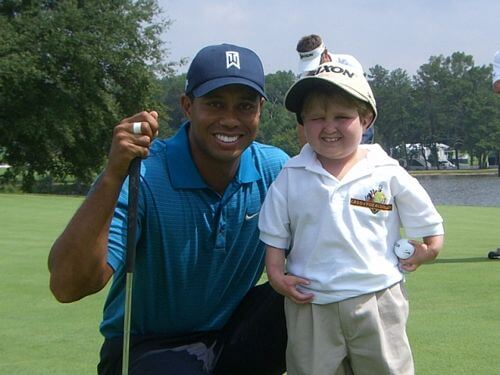
And as the name implies, it does so with a mission to raise money for a number of incredibly important charities. The Caddie Network was honored to catch up with Russ Holden, the Founder and President of Caddy For a Cure, and talk to him about these incredible caddie opportunities and how people can get involved.
TCN: Hi Russ. Thanks so much for taking the time. Let’s start with, what is Caddy For a Cure?
Holden: Caddy For a Cure is one of the most unique opportunities in all of professional sports. We are a way for you to have a golf experience of a lifetime, caddying for one of the world’s best golfers in a practice round, or pro-am, while benefiting some incredible organizations. You can caddie for a PGA Tour or LPGA Professional, and often other celebrities as well in some events, all while benefitting the Fanconi Anemia Research Fund, Birdies for the Brave, and many other important nonprofit charities.
TCN: You started this while you were a caddie on Tour? Tell us about your caddie experience.
Holden: Yes. A little background. I was the PGA Head Professional at Woodfield Country Club in Boca Raton, Florida, and there I met Bernhard Langer. As a member, he would occasionally have me look at his swing, and our relationship just continued to develop. One day he asked if I’d come caddie for him on a part-time basis. I had aspired to play on Tour at one time myself, so the chance to to actually go out on Tour and be a part of the action was just a dream come true. And we must have done OK… he kept inviting me to fill in for his regular caddie (Pete Coleman).
READ: Caddies reveal their biggest on-course pet peeves | 23 hilarious caddie one-liners
In 2001, Bernard invited me to come out full-time as a little experiment that ended up being 6 1/2 years, and I tell you, I was having the time of my life. Golf just attracts really good people, and constantly being around the players, the other caddies, the sponsors, I was really enjoying it.
At the same time, when I came out there, I wasn’t thrilled at how caddies were often treated at some of the events. It gave me a whole new appreciation for how good the caddies are, how under-appreciated they were, and how valuable a good caddie could be for a player. Things have certainly changed for the better now, but that will always be a big cause for me — appreciating the guys out there working hard for not that much recognition. It’s one of the big reasons I’m so appreciative of the work you guys (The Caddie Network) are doing.
TCN: Thank you for that. And how did Caddy For a Cure come to be?
Holden: When I was still at Woodfield but occasionally out on Tour with Bernhard, back in the shop, one of my assistants had two children born with a rare bone marrow disorder called Fanconi Anemia. That really hit home and I desperately wanted to help them, and others who might be fighting this disorder. I just didn’t know exactly how. But it became something burning in my mind.
At some point, while I’m rubbing shoulders out there with Tiger, Phil, Ernie and all the stars on Tour, it hit me, “How incredible would it be for golf fans to be able to have this same experience I’m having, and we could benefit Fanconi Anemia research at the same time?”
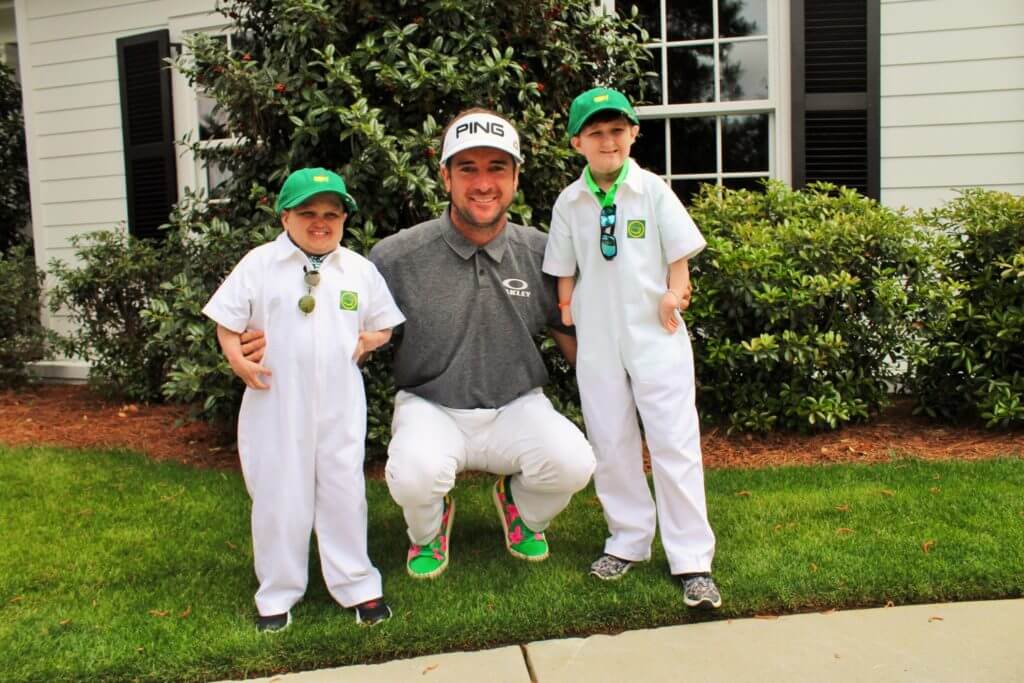
I put together a proposal, went to the Tour and presented my idea. They cautiously approved it, honestly giving me a short leash to make sure it wasn’t too disruptive, and said, “Let’s see how it goes.” And now, 16 years later, here we are, still caddying for a cure.
TCN: How does a person get to caddie with Caddy For a Cure?
Holden: The best way is to go to our website, caddyforacure.com and there you’ll see a list of players and events where you can bid for the opportunity to take part in one of the events. It’s an auction site, bids can be competitive, but most fans will find an opportunity they feel comfortable bidding on. Even more, if there is a particular player or a tournament you really want to take part in and it’s not listed, you can contact us through the website and we’ll do everything we can to make it happen.
TCN: As you know better than most, caddying can be a tough job. What if they have never caddied before? What will their actual duties be? Are they going to get in trouble if they don’t rake a bunker properly?
Holden: No, not at all. And they’ll do as much, or as little, as they want. The most important goal is for them to enjoy the day. So in 2005, we added a military component to our organization. We’re now aligned with Birdies for the Brave, it’s the official military outreach of the PGA Tour and now a significant part of our mission. So often, when a person makes a donation and caddies for say a Jordan Spieth, they are often escorted by the regular caddie, in this case Michael Greller, and also accompanied by a wounded military service person. So you now have a team making sure that all the caddie duties are taken care of. The regular caddie acts as a fail-safe, and still has his own tasks to get ready for competition days, but the team aspect means that our caddies can focus more on fun, rather than making sure each yardage is correct or every divot replaced. Those bags can get heavy, it’s not a bad thing to take a few holes off and just walk alongside. Often, they will split up the duties, where one carries the bag, the other carries towels, etc. Most of all, it’s about spending time inside the ropes and having a fun, lifetime experience. They definitely get that.
READ: The definitive guide to tipping your caddie | The unwritten rules of caddying
TCN: And the reception from the players?
Holden: Incredibly receptive. Phenomenal. It was great to get the blessing of the PGA Tour, but without the players, this can’t work. They have to agree to do it. It certainly raised a few eyebrows when we first started, the player-caddie dynamic is so important and we get that. But when players started seeing how well things went, how minimally disruptive and yet still really enjoyable for everyone our presence could be, the good we were doing, the wounded military personnel taking part, they really started to get more involved. Even more, we have many celebrities and athletes that are taking place in pro-ams and such that are getting involved as well. Roger Clemens, Toby Keith, Ben Roethlisberger, just to name a few, are folks that have supported our mission and invited a fan inside the ropes to caddie for them.
One other note about the Tour players — I have to share an amazing statistic because many of the players and caddies out on Tour know it. Justin Thomas, winning at the BMW Championship recently, became our 35th player to WIN the week of, or the week after, taking part in Caddy For a Cure. So when I asked Rory McIlroy the week after if he would take part in Caddy For a Cure next year (this year he took part at Bay Hill and won THE PLAYERS the next week!), he couldn’t say yes fast enough. I won’t say it’s a karma thing, but I hope it shows that good things can happen to good people.

TCN: And I’m guessing you get good feedback from the people who have taken part as auction winners.
Holden: Very much so. We all work really hard to make it a lifetime experience, and I’m pleased to share that virtually everyone has felt that way. It’s a group effort and I can’t thank the Tour, the players and caddies, and our sponsors enough because they all do their part to make it great for everyone taking part. One interesting fact that I think you guys will appreciate… Virtually every participant has said this same thing in regards to their day. They love spending time talking with the players, but they were overwhelmed with gratitude and appreciation for how the professional Tour caddies treat them and take care of their needs. I think they are even a little surprised at how much they enjoy the interaction with the caddies. Often, by the end of the day, they’re as big a fan of the caddies as they are of the players they bid on.
TCN: That’s so great to hear. Not surprising, but really good to affirm what we know. So one final question — What’s with the spelling? Caddie is “ie”, not a “y”.
Holden: [Laughing] Actually, Webster’s doesn’t really make a preference. When we had a logo designed, we really liked it, but it was too wide. So quite honestly, we were trying to save characters in the name. And it fit, and we just went with it. It’s worked out pretty well so far. I don’t see us changing it anytime soon.
To date, Caddy For a Cure has raised more than $2.5 million for Fanconi Anemia and Birdies for the Brave (including the 11 military organizations supported by them) and several host site charities as well, including helping young caddies via the Evans Scholar Program at the recent BMW Championship.
To learn more about the mission and how you can take part in Caddying for a Cure, visit their website at Caddyforacure.com.

